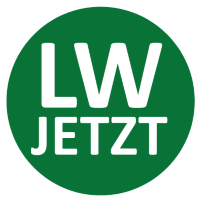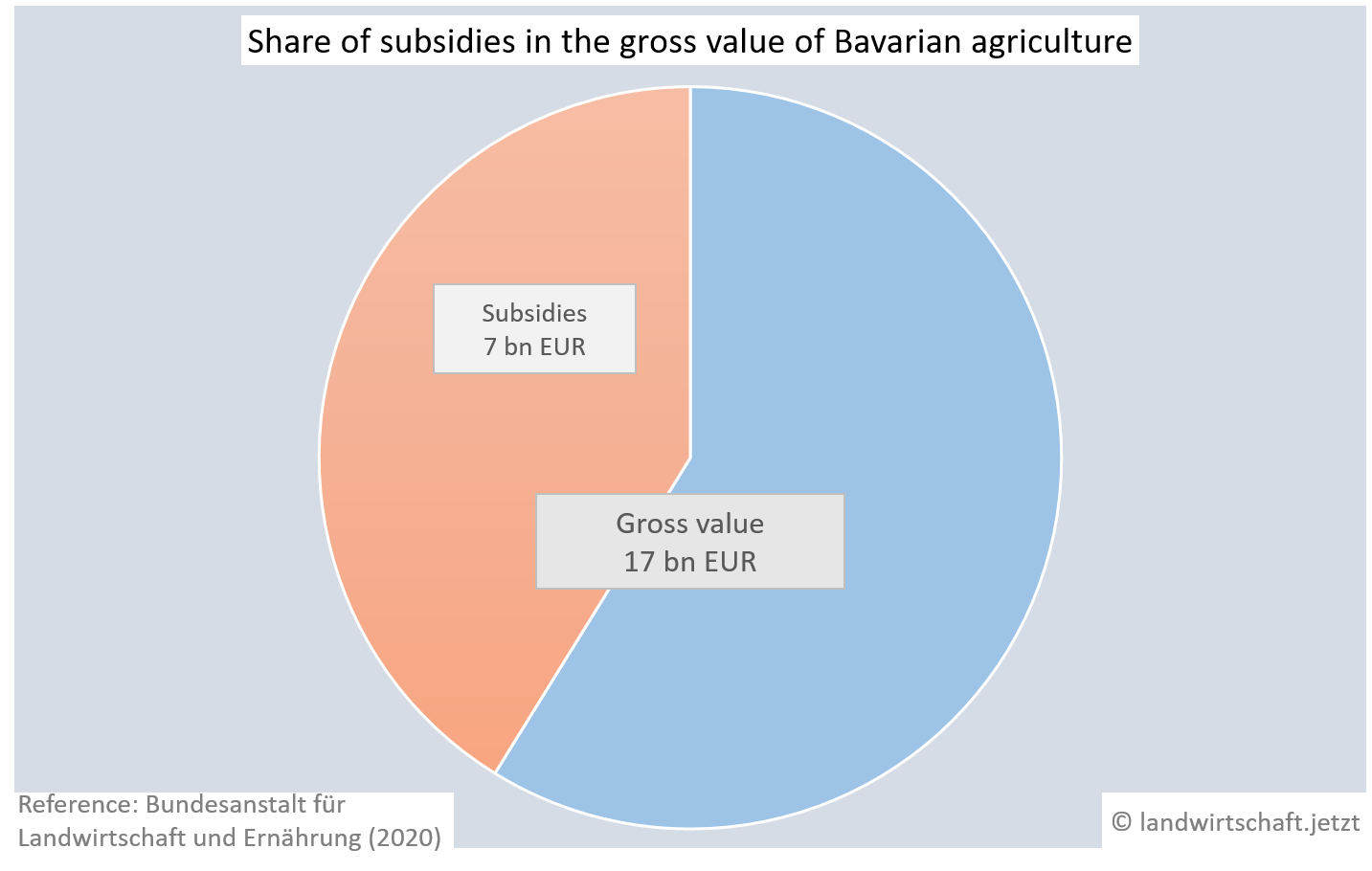Myth: Agriculture in Germany is only economically viable with animal husbandry.
In fact, land animals are kept in about 67% of farms ([2], p.81). In addition, 1% of German farms operate aquacultures in which fish and crustaceans are bred ([3], p.9). 49% of the production value is generated with animals ([4], p.121). A change to a plant-based food system is therefore associated with significant changes.
On the other hand, German agriculture is heavily subsidized and cannot survive in this form without grants. The gross value added of agriculture, forestry and fishing totals 17 billion euros. The subsidies raised for this purpose comprise 7 billion euros, i.e. more than one third ([4], p.122). Slightly less than half are main farms (48%) and thus serve as the primary source of income. More than half of the approximately 244 thousand farms are part-time farms (52%), operated by the owners on a part-time basis ([2], p.91). In Germany, only about 1% of the workforce is employed in agriculture ([2], p.72). Converted, each full time worker in agriculture is subsidized with 14 thousand EUR per year.
A transformation from animal-based agriculture to a subsidy-minimized, plant-based agriculture using one-time grants therefore seems to make good economic sense and is desirable from a business perspective.


